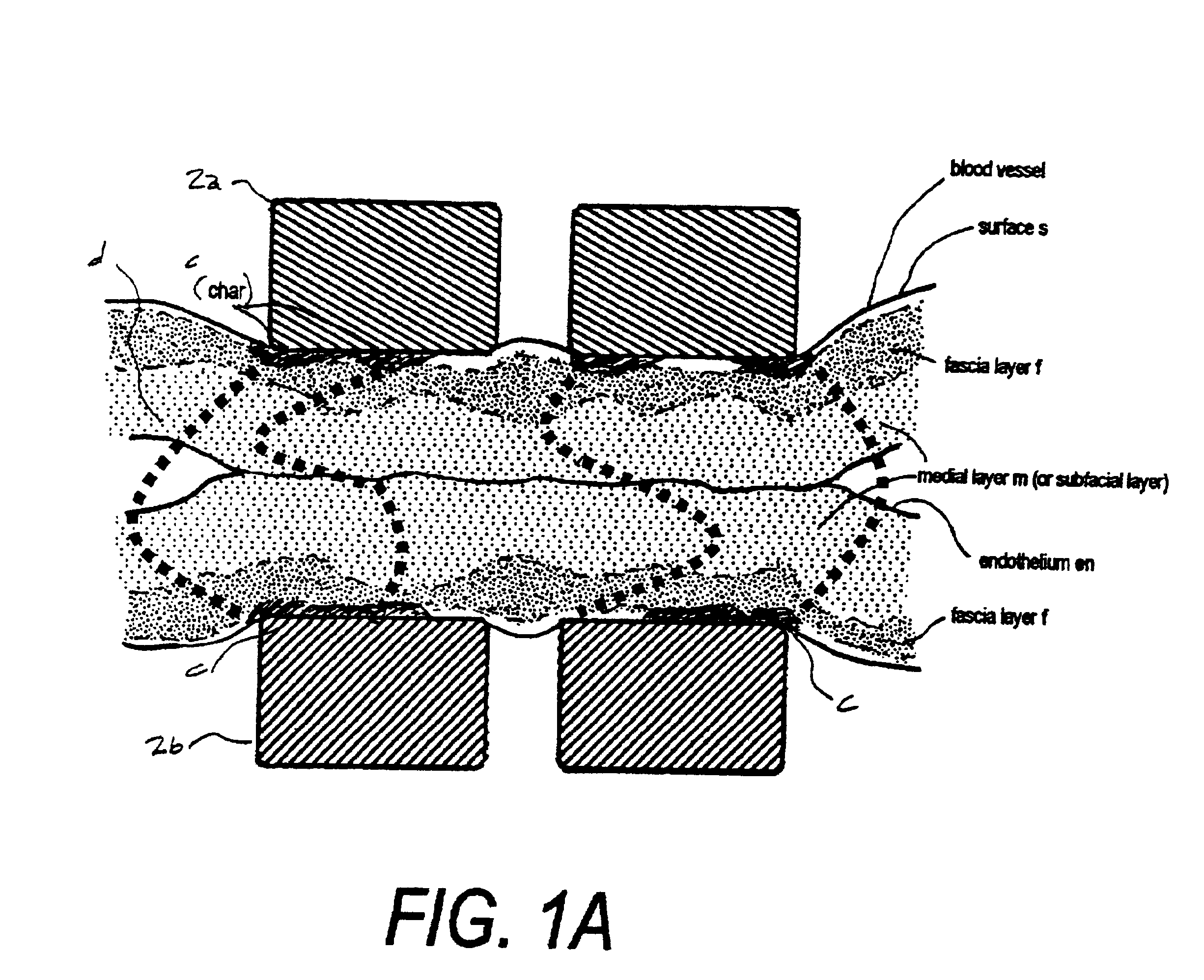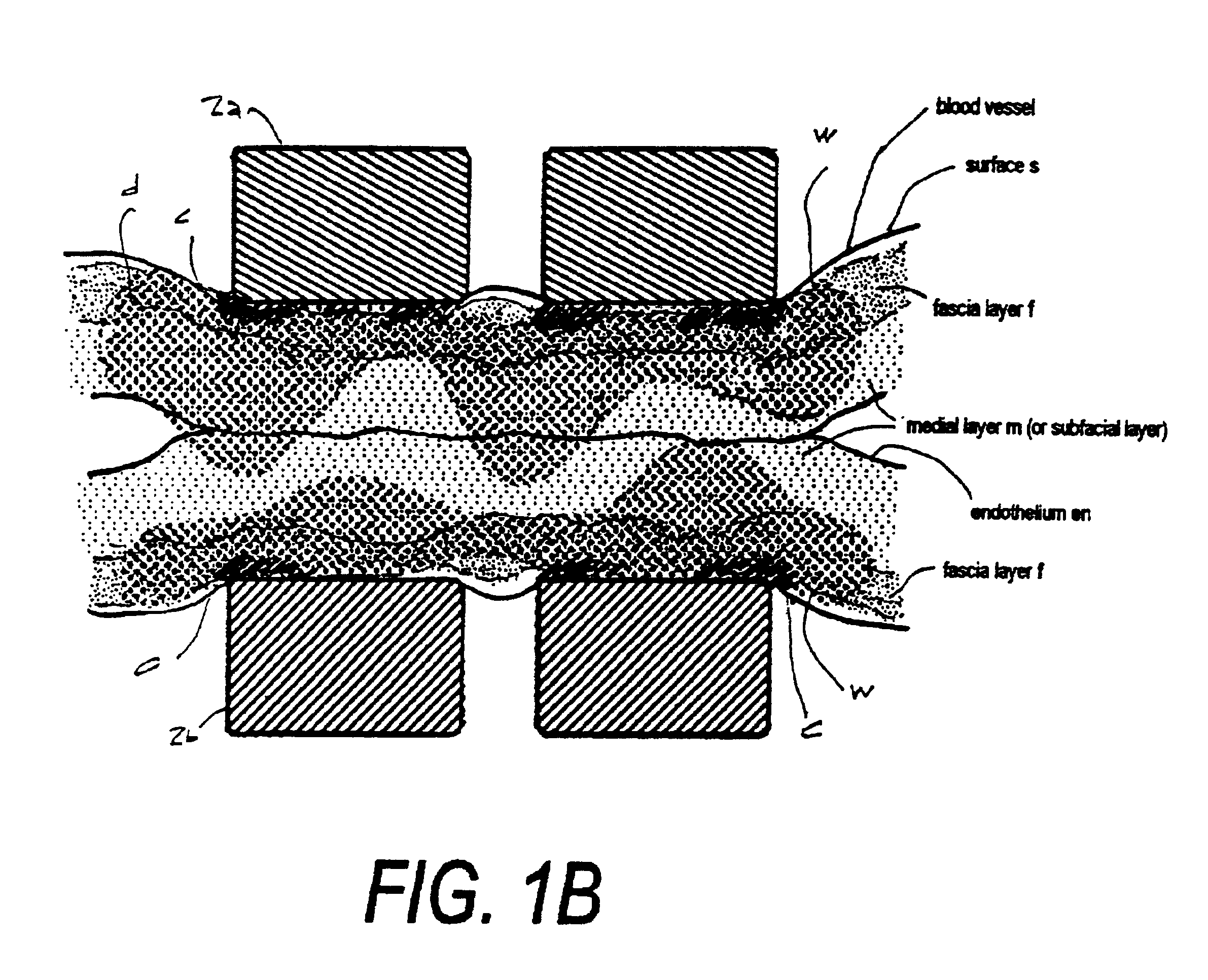Electrosurgical working end and method for obtaining tissue samples for biopsy
a working end and electrosurgical technology, applied in the field of electrosurgical instruments, can solve the problems of inability to achieve effective regional heating and difficult sealing of tissues, and achieve the effect of uniform current flow and uniform ohmic heating of tissues
- Summary
- Abstract
- Description
- Claims
- Application Information
AI Technical Summary
Benefits of technology
Problems solved by technology
Method used
Image
Examples
Embodiment Construction
[0025]1. Type “A” Working End for Tissue Transection. Referring to FIG. 2, the working end 10 of an exemplary Type “A” embodiment is shown that is adapted for electrosurgically transecting a volume of tissue from a patient's lung or other targeted structure while at the same time sealing the transected tissue. The working end 10 comprises an introducer body portion 11 (phantom view) that extends from a proximal body end 12a to a distal body end 12b along longitudinal axis 15. In the exemplary embodiment of FIG. 2, the introducer body 10 can have a cylindrical or oval cross-section and comprise a thin-wall tubular sleeve 16 that extends from any suitable handle (not shown). The diameter of sleeve 16 can range from about 5 mm. to 10 mm., although other diameter instruments fall within the scope of the invention. The handle may be any type of pistol-grip or other type of handle known in the art that carries an actuator lever or slide to extend the translatable member 40 over first and ...
PUM
 Login to View More
Login to View More Abstract
Description
Claims
Application Information
 Login to View More
Login to View More - R&D
- Intellectual Property
- Life Sciences
- Materials
- Tech Scout
- Unparalleled Data Quality
- Higher Quality Content
- 60% Fewer Hallucinations
Browse by: Latest US Patents, China's latest patents, Technical Efficacy Thesaurus, Application Domain, Technology Topic, Popular Technical Reports.
© 2025 PatSnap. All rights reserved.Legal|Privacy policy|Modern Slavery Act Transparency Statement|Sitemap|About US| Contact US: help@patsnap.com



